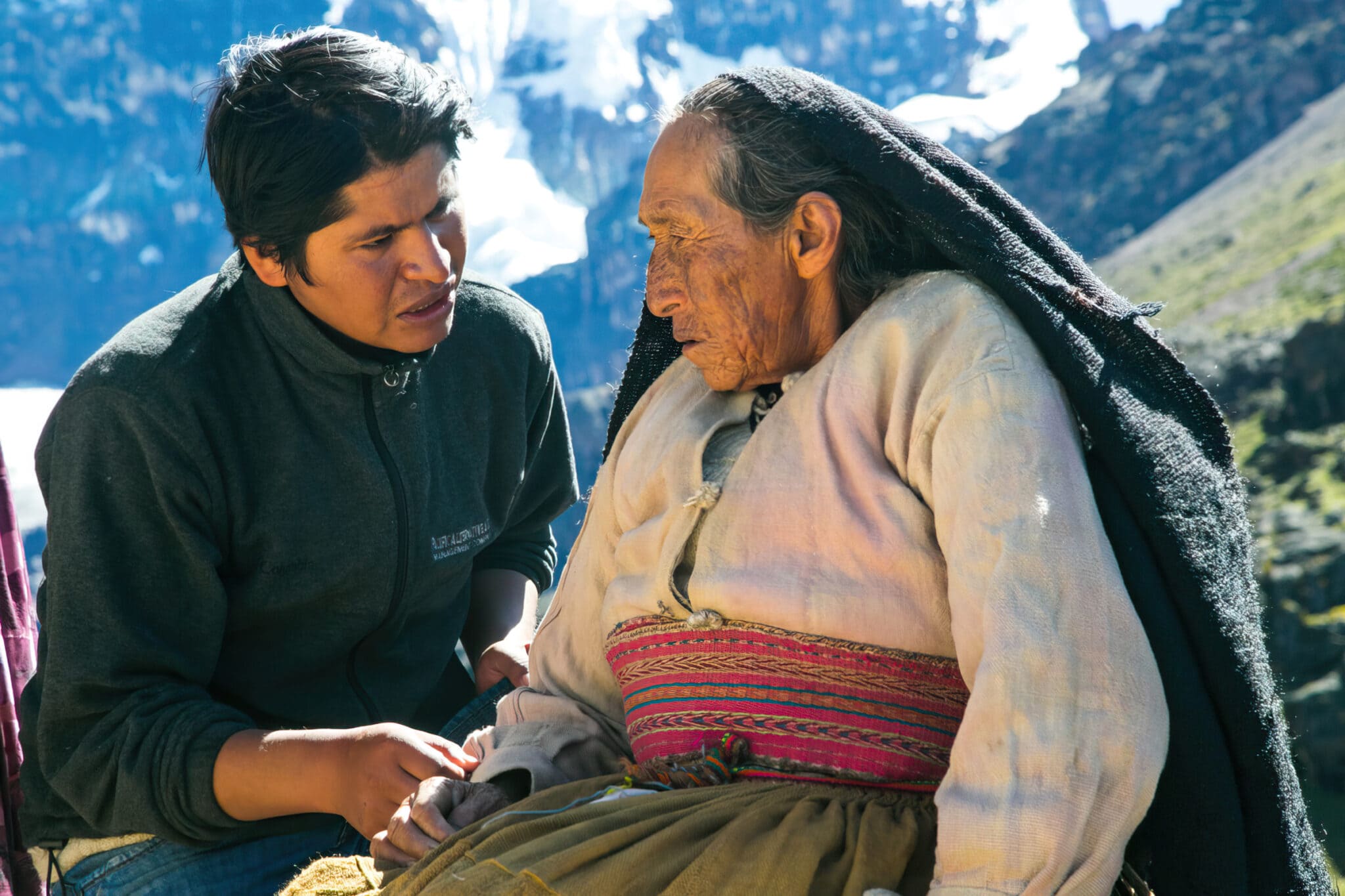
Óscar Catacora: Looking and feeling the world from the Andes
Wiñaypacha, a film entirely spoken in the Aymara language, Óscar Catacora became a significant referent of Latin American cinema. A year after his passing, we talked about the legacy of the Puno filmmaker with critic Emilio Bustamante, co-author of “Las miradas múltiples. El cine regional peruano.”
By Alonso Almenara
Days after the death of Óscar Catacora, in November 2021, a colleague of his, Joel Calero, published a moving text on Facebook in which he stated that, while making films is complex all over the world, it is even more so for a son of farmers in Puno. Born in the district of Ácora, on the shores of Lake Titicaca, the highest lake in existence, Catacora is remembered as a hero of his community and an avid cinephile. He was a regular of film clubs who constantly informed himself about his favorite directors using Internet booths and, in the words of critic Emilio Bustamante, “went to university, more for the chance to talk about film than for the content of the courses.”
His self-taught will led him down unusual paths: Catacora dreamed of being an actor, as he initially believed performers made films. When he finally managed to enroll in the National University of the Altiplano to study theater and communications, he had enormous difficulties. He financed his studies by working as a bus collector and then at a company of photographs and videos of weddings and baptisms. It was there that, against all odds, he learned the basics of film technique.
Today, Catacora is considered by his peers as the author of one of the most influential films of recent Latin American cinema: Wiñaypacha (2017), awarded as the best first film at the Guadalajara Festival in 2018. Entirely spoken in Aymara, it tells the story of Willka and Phaxsi. These two older people live in a remote place in the Andes, where they barely survive, waiting for the return of their son Antuku, who left many years ago for the city.
On the one hand, the film’s visual style – the use of a fixed camera, the protagonist role of the landscape – is connected to the universe of the western and minimalist cinema of Ozu, Wiñaypacha (“eternal world or universe”) expresses. On the other hand, the vision of a forgotten people, or one that has rarely been heard in Peru, an Andean country dominated by Lima’s elite. Its tone is melancholic and painful, as it deals with abandonment: the one suffered by the elderly couple by their son and the one experienced by indigenous communities in the Peruvian State. And it is the same abandonment that tragically sealed Catacora’s fate: the filmmaker died at the age of 34 from appendicitis, which he could not treat in time due to the lack of medical posts in the province of Collao, where he was filming Yanahuara, his new film.
A year after Catacora’s death, we talked about his legacy with Emilio Bustamante, film critic and co-author, and Jaime Luna Victoria, of ” Las Miradas Múltiples. El Cine Regional Peruano” (2017). Bustamante is one of the most prominent critics in Peru and one of the first to be interested in Catacora’s work. He interviewed the Puno filmmaker on several occasions, starting when Oscar was still a student and had only a short film to his credit: “El Sendero del Chulo” (2007). When, years later, Wiñaypacha appeared, Bustamante contributed to the understanding of the film at the local level, pointing out that it broke with a long tradition in Peruvian cinema: the one of representing Andean people from an implicitly paternalistic and colonial viewpoint.
In “Miradas Multiples,” Bustamante and Luna Victoria sought, precisely, “to make known a cinema that is continuously made in Peru for twenty years, but that is ignored or underestimated in the capital of the country despite its undeniable value.” For Bustamante, the ‘regional cinema’ – so-called to differentiate it from Lima cinema – is the most critical movement in Peruvian cinema in this century. And since the book’s publication, criticism and academia have given him the right: many of the most celebrated Peruvian films of the last five years have been produced outside the capital. Among them, Casos complejos (2018), En medio del laberinto (2019), Manco Cápac (2020) and, especially, Wiñaypacha.
Oscar Catacora was born in Acora, Puno, a region that has recently witnessed essential developments in cinema. Could you comment on what you found there during your research?
At the beginning of this century, there began to be a more or less intense cinema production both in Puno and Juliaca. In Puno, the film ” El Misterio del Kharisiri” by Henry Vallejo stands out, and in Juliaca, the figure of Flaviano Quispe, the author of melodramas such as “El Huerfanito.” Later, fantasy genre films appear, many of them about the damned, such as “El Regreso del Condenado en el Poder Andino,” where the oral tradition of the region is mixed with genres such as Italian westerns and with a protagonist reminiscent of “El Cuervo” by Alex Proyas. This mix of Andean tradition with elements of B-movie cinema is widespread in these productions. Melodramas are also made on essential themes for the region, such as abandoned childhood in the case of “El Huerfanito” or illegal mining in “Amor en las Alturas” or on mental health, such as in “Marcados por el Destino.” These are films made with very few resources by mostly empirical filmmakers, but they manage to tell an efficient narrative and have widespread appeal.
That production went into a crisis with the arrival of theaters, which offered films in better projection conditions. But the quality of local cinema had also begun to decline, something that Puno filmmakers recognized in my conversations with them.
Around 2012, when I first met Oscar Catacora, two possibilities were being considered to face this decline in production. The first was to make low-budget films, mixing genre elements with Andean tradition, as had been done before, but aimed at a rural audience that did not reach the multiplexes as easily. And the other option was to make high-quality technical films to enter the theaters and potentially participate in festivals or obtain funds from the Ministry of Culture. Puno filmmakers explored both options.
I would like to put Oscar Catacora’s work in perspective with regard to that regional production. To what extent are his early films heirs to that tradition?
Catacora begins his journey in cine by making a genre film called El Sendero el Chulo, a medium-length film with thriller and action elements. He makes it at 19 years old, and it goes well: he exhibits it in Puno and Juliaca, gets some projections in Lima, and is invited to the Arequipa Film Festival. So he begins to make a name for himself in regional cinema.
Later he will make some short films as a student at the National University of the Altiplano. Then, with Cine Aymara Studios, a family company, he makes some genre films for peripheral populations, including an Andean western called La Venganza del Súper Cholo. That is the terrain on which Catacora exercises himself as a filmmaker.
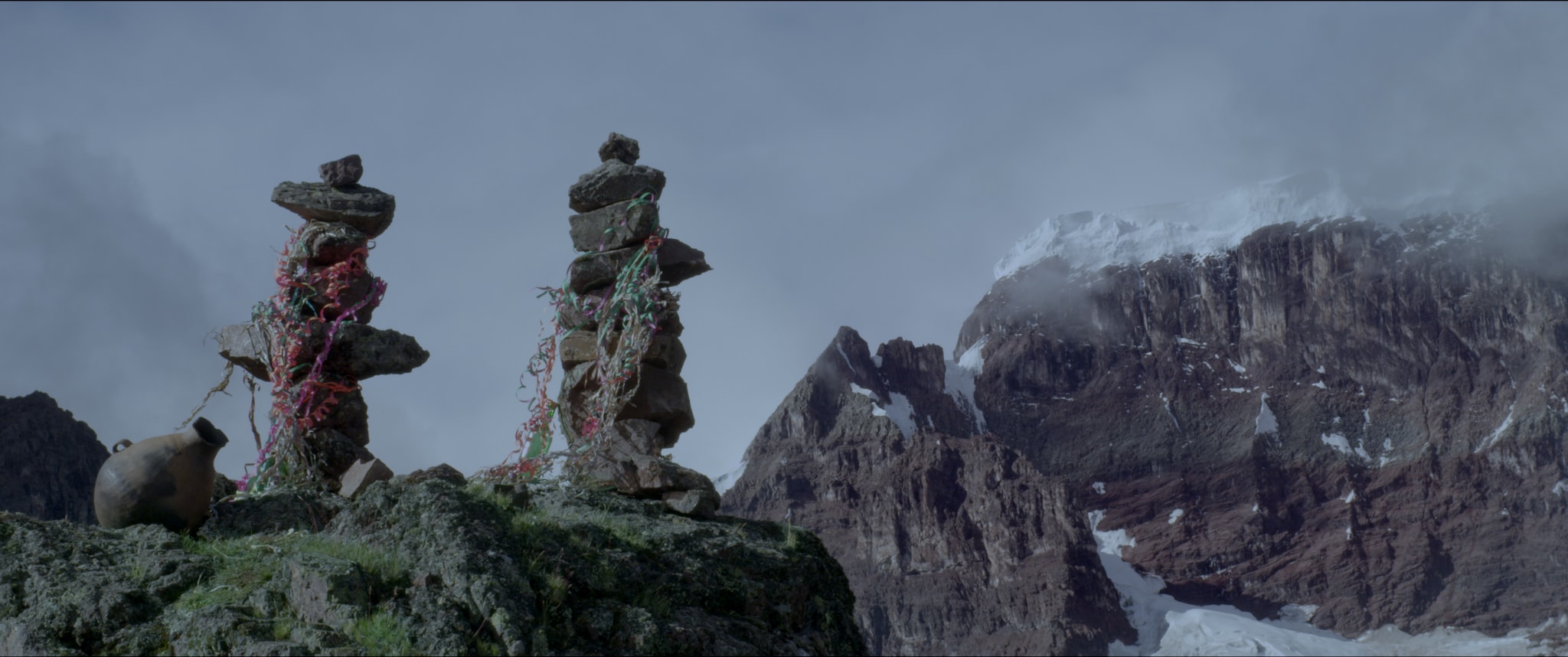
How did you become interested in his work?
In reality, his early films are challenging to find. I saw one of them in Puno; he showed it to me. And I saw it in one of those widespread rooms in this city, where one rents DVDs and separates a space to watch them. Oscar took us, Jaime Luna Victoria, and me, who were researching regional cinema. There we saw La Leyenda del Condenado, directed by Francisco Torres, in which Oscar does the photography.
Later I saw another film by Oscar at the Ayacucho Film Festival, also produced by Cine Aymara Studios, La Venganza del Súper Cholo, based on the story El campeón de la Muerte by Enrique López Albujar. It is interesting: a commercial cinema with influence from Italian westerns and with some humorous touches.
El Campeón de la Muerte has a compelling western plot: a bandit kidnaps a farmer’s daughter and then returns her in pieces in a burlap sack. Then the farmer goes to look for a famous hitman they call the “champion of death” to have him assassinate the criminal. In Catacora’s version, not only does the humor stand out, but also the denunciation of a particular local corruption. That is what Oscar does between El Sendero del Chulo and Wiñaypacha. However, he does not always appear as a director because the direction is attributed, in most cases, to the Aymara Studios collective.
Let’s talk about your first meeting with Catacora. Under what circumstances did you meet him?
I met him after attending an El Sendero del Chulo screening, a medium-length film that already had prestige among followers of regional cinema in Lima. The next day Jaime and I interviewed him. In the interview, which was brief, he said many exciting things. Oscar would have been 25 years old at that time.
What caught your attention about his work in that early stage?
I liked El Sendero del Chulo because it has a perfect rhythm and is very well-edited and planned. Oscar told us that he made it with a broken camera, which visually makes it striking: it has a very contrasted photo, but that is pure chance. He edited the film in an Internet cabin for several days and, according to him, the owner of the cabin lowered the price because he liked what he saw.
Oscar’s entire trajectory is interesting. He had entered Altiplano University to study theater because he wanted to be an actor. He started asking people who knew something about film and used the Internet to document himself. Then he entered the army following a family tradition, but also because he was interested in learning the institution and military practices, as he had written a script about the Aymara leader Túpac Katari’s military campaign, called Los Indomables. Tito Catacora, Oscar’s uncle, who is also a filmmaker, is finishing filming it right now.
Then, after leaving the army, Oscar studied Communication Sciences, also at the Altiplano University, and there he deepened his knowledge of film, although always, as he told us in the interview, trying to maintain distance from his teachers. He said he didn’t want to make the kind of films they made and wanted to make his own films.
“There was already something that announced the aesthetics of Wiñaypacha in Catacora’s short films and his affinity for directors like Ozu, Kurosawa, and Ford. But even so, it was impactful: the film breaks with the tradition of regional cinema and Peruvian cinema in general. Mainly because it marks a difference concerning the representation of Andean farmers.”
How does Catacora go from that formative stage to directing an author film like Wiñaypacha?
He had an interest in being an author. In a 2012 interview, he told us that he started wanting to be an actor because he was fascinated by cinema and believed that actors made films. Later he found out that there were directors and began to take an interest in certain directors. He liked Brian de Palma a lot, which is surprising because it has nothing to do with his cinema. He also liked Sergio Leone and Morricone’s music, another striking thing because there is no music in Wiñaypacha.
He said he was interested in westerns because the western landscape is very similar to Puno’s. And he was interested in Japanese cinema because he saw a substantial similarity between the Japanese physique and the Puno physique. Kurosawa’s Seven Samurai was a considerable influence. Also, Ozu’s cinema can be seen in Wiñaypacha: in the frames with low angles, in the absence of camera movement. And I think the influence of Kurosawa can be seen in the importance of nature. In another interview, he said he liked John Ford, which makes sense, too: in his westerns, Ford sometimes keeps the camera still so that you can notice the movement of the elements. That’s why Ford and Kurosawa had affinities.
How does Wiñaypacha differ from Puno cinema produced until that point?
Wiñaypacha surprised me a lot. I remember seeing it with some friends, but nobody knew Catacora. I did know who he was and his influences, but it still surprised me. It’s a vast qualitative jump. Something was already announcing that aesthetic in Catacora’s shorts and his affinity for the directors I mentioned. Still, even so, it was striking: Wiñaypacha not only breaks with a tradition of regional cinema but also with Peruvian cinema in general mainly because it marks a difference concerning the representation of Andean farmers.
When the movie came out in 2017, you wrote an article mentioning that topic. This may be an excellent occasion to elaborate on those first impressions.
This representation has two main milestones: the Cusco School and Federico García. The differences with Catacora’s proposal are apparent. In Kukuli, the actors are peasants, unlike the protagonist, Judith Figueroa, who is the director’s sister and a descendant of landlords. But the peasants are framed with angled shots, which are implicitly paternalistic: the viewer looks down at them with the condescending weight that entails. In contrast, in Wiñaypacha, the camera is the same height as the subjects it records. It is a level shot, and I think that difference is essential.
Wiñaypacha is a film made by the children or grandchildren of the peasants that the Cusco Film School wanted to represent. The members of that group were not peasants or children of peasants; they were urban intellectuals who tried to assume the representation of peasants in artistic and political terms. In Wiñaypacha, there is none of that: it is a horizontal gaze.
About Federico García, there is also an interesting difference. Garcia was not a peasant either; he was an urban intellectual. There is a solid ideological charge in his cinema, especially in his first films, which I think are the best: Kuntur Wachana, Laulico, El Caso Huayanay, and Túpac Amaru. There is always an idea of revolution: a modern conception of the world, moving forward, and embracing progress. In Wiñaypacha, on the other hand, there is a cyclical conception of the world. And an important factor is destiny: not a random destiny, but one marked by the Apus, those sacred mountains attributed with influence over the lives of those who inhabit their slopes. It is a worldview much more aligned with a certain traditional Andean mentality.
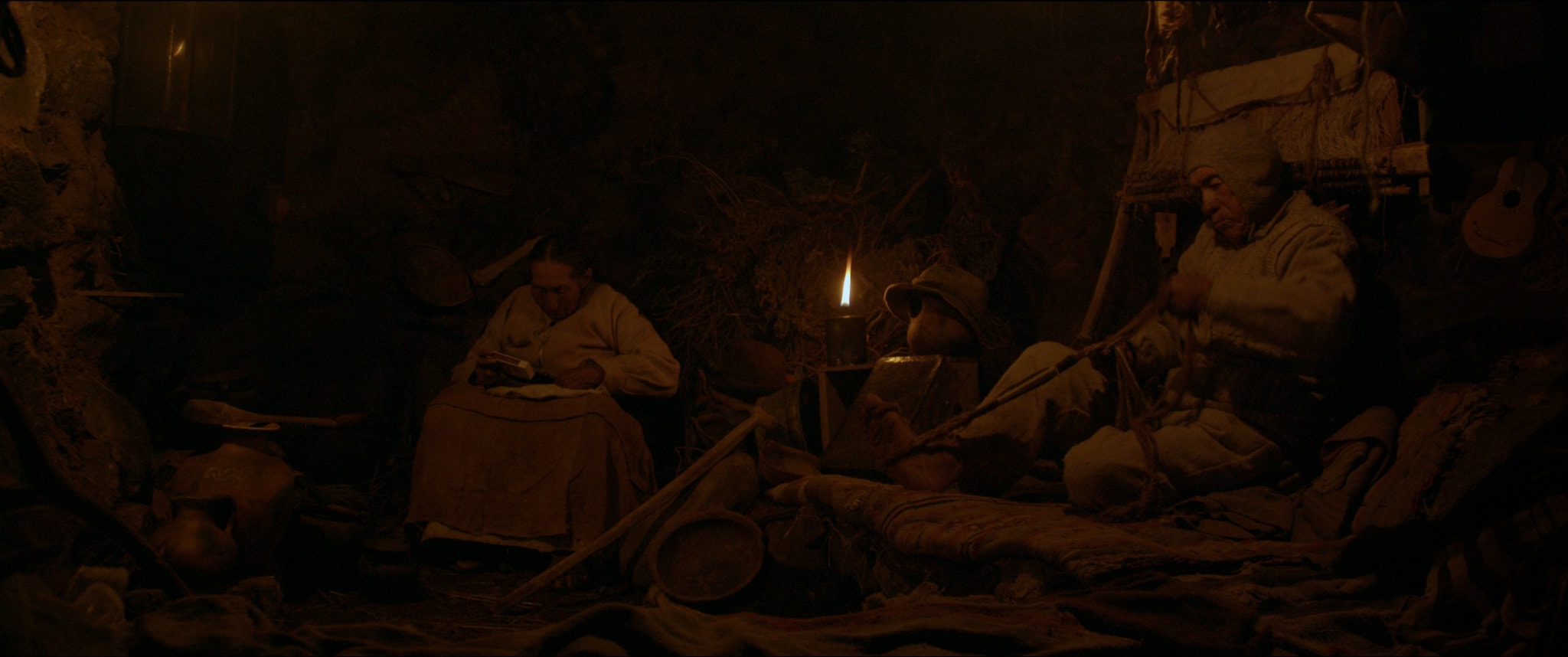
Is Catacora’s work related to other Peruvian filmmakers of his generation?
I believe there are links with other filmmakers of his generation who work with the so-called image-time, an image that emphasizes the passing of time and that is not linked to the movement of characters or actions. I am thinking of Peruvian filmmakers such as Eduardo Quispe Alarcón, Farid Rodríguez, or Raúl del Busto. There are also similarities with another older Puno filmmaker, Henry Vallejo, who evolved in that direction with Manco Cápac.
But in reality, it is a global trend: Catacora’s work has precedents in films of the new Argentine cinema of the 90s and early 2000s, as well as in the Eastern cinema of the 90s, which has influences from filmmakers such as Ozu and Bresson. These films work on the characters’ wandering: they are adrift until an epiphany arrives. This appropriately modern structure distinguishes them from classic cinema, where characters have clear goals and are constantly striving to achieve them.
How was Wiñaypacha seen from Lima? Has there been a specific exoticization factor around Catacora’s figure? And what do you think of those who argue that Wiñaypacha – like other films awarded prizes by the Peruvian Ministry of Culture – responds to a type of cinema made for festivals, with a sensitivity for export?
Without a doubt, there has been a certain exoticization or condescension from Lima towards Catacora, but this generally played in the film’s favor. The theater where Wiñaypacha had the most spectators was El Alcázar, in the Lima district of Miraflores. There it had more viewers than in Puno, for example. But this is because it is a film aimed at viewers who are probably more familiar with modern cinema, with a cinema of temporality, of slowness. This was a conscious choice by Catacora. There is something else that is true, and that is that the Ministry of Culture tends to award this type of author films, modern ones, which has inevitably influenced the cinema that is now made in regions. The case of Henry Vallejo is significant: he went from directing El Misterio del Kharisiri, one of the founding films of Puno regional cinema, of the fantasy genre, to Manco Cápac, a modern film that works with temporality.
But I think this style change also responds to a personal process, and it seems that the same thing happens with Catacora. After starting in cinema with genre films, both began concentrating on other types of productions that responded better to their artistic concerns. Vallejo studied in Havana and Colombia, where he became familiar with a different kind of cinema, which led him to Manco Capac. On the other hand, Oscar studied, talked a lot about cinema, and watched Ozu and Kurosawa films, which is reflected in Wiñaypacha.
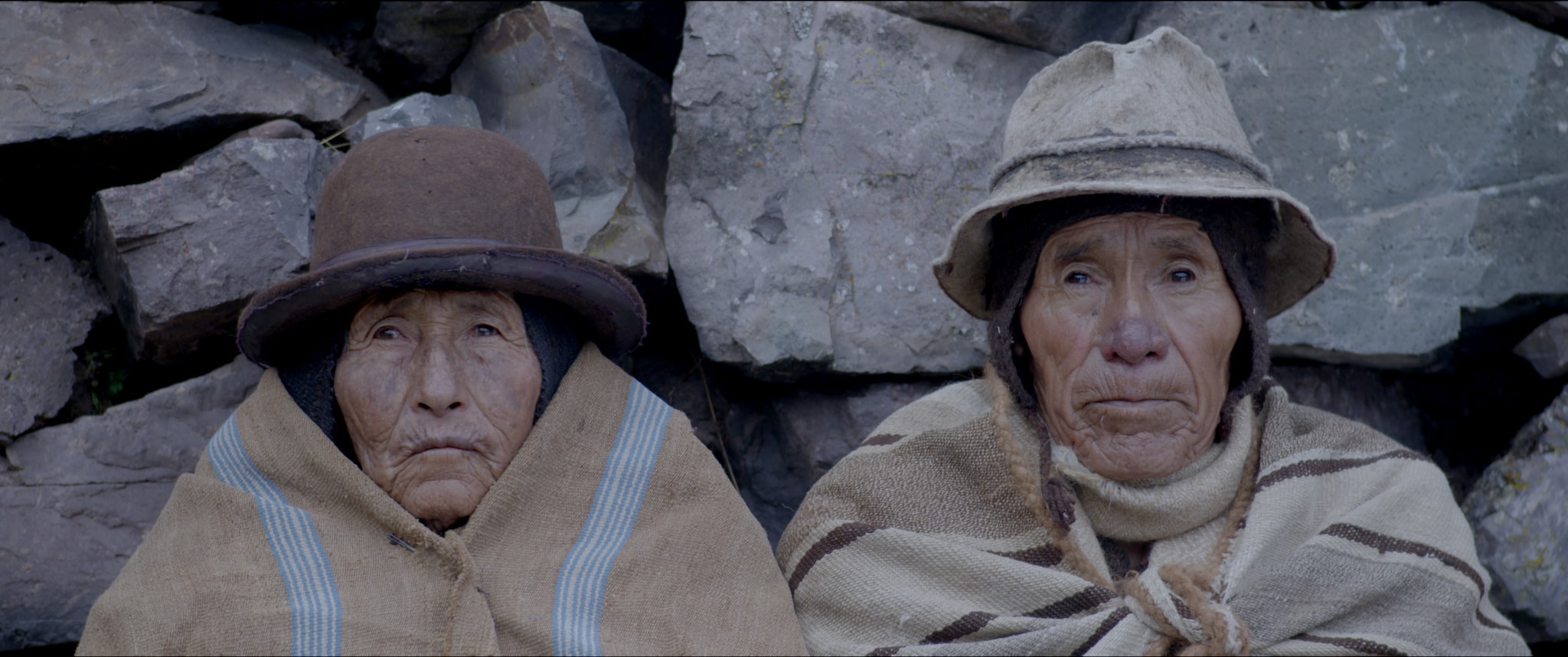
“The Catacora are Aymara; they claim and assume themselves as such. Wiñaypacha is a familiar film: almost all the participants have the surname Catacora. Oscar’s grandfather is one of the protagonists. His uncle is the producer; his mother is the art director. That is something very typical of regional cinema. But in the Catacora family, there is something stronger, an affirmation of cultural identity.”
Let’s talk about the strengths of the movie. Visually, what caught your attention the most?
That is another excellent surprise because Catacora himself did the photography. And it is exquisite photography, made with natural light, which was awarded at the Guadalajara Festival. Oscar told me later that he had tried several types of cameras to choose the one that would capture the light in the way he wanted. For that, he also decided on the year’s season, so he postponed the filming until the precise conditions he had in mind were met. The direction of actors is another strong point of Wiñaypacha, the choice of natural actors was a great success.
Wiñaypacha is the first film shot in Aymara. How crucial is this decision?
It is essential. The Catacoras are Aymara; they claim and assume themselves as such. In addition, Wiñaypacha is a very familiar film: almost all the participants are surnamed Catacora. Oscar’s grandfather is one of the protagonists; his uncle is the producer, and his mother is the art director. This is something very typical of regional cinema. But in the case of the Catacoras, there is something more substantial of cultural identity affirmation.
When Jaime and I traveled to Puno to interview directors, Tito, Oscar’s uncle, and other family members interviewed us before we talked to Oscar for the second time. They locked us in a room and started asking us questions: why are they coming, what are they interested in knowing, where are they going to publish this? They acted as a group, and Oscar was the family’s jewel. We could only talk to him once we passed the exam.
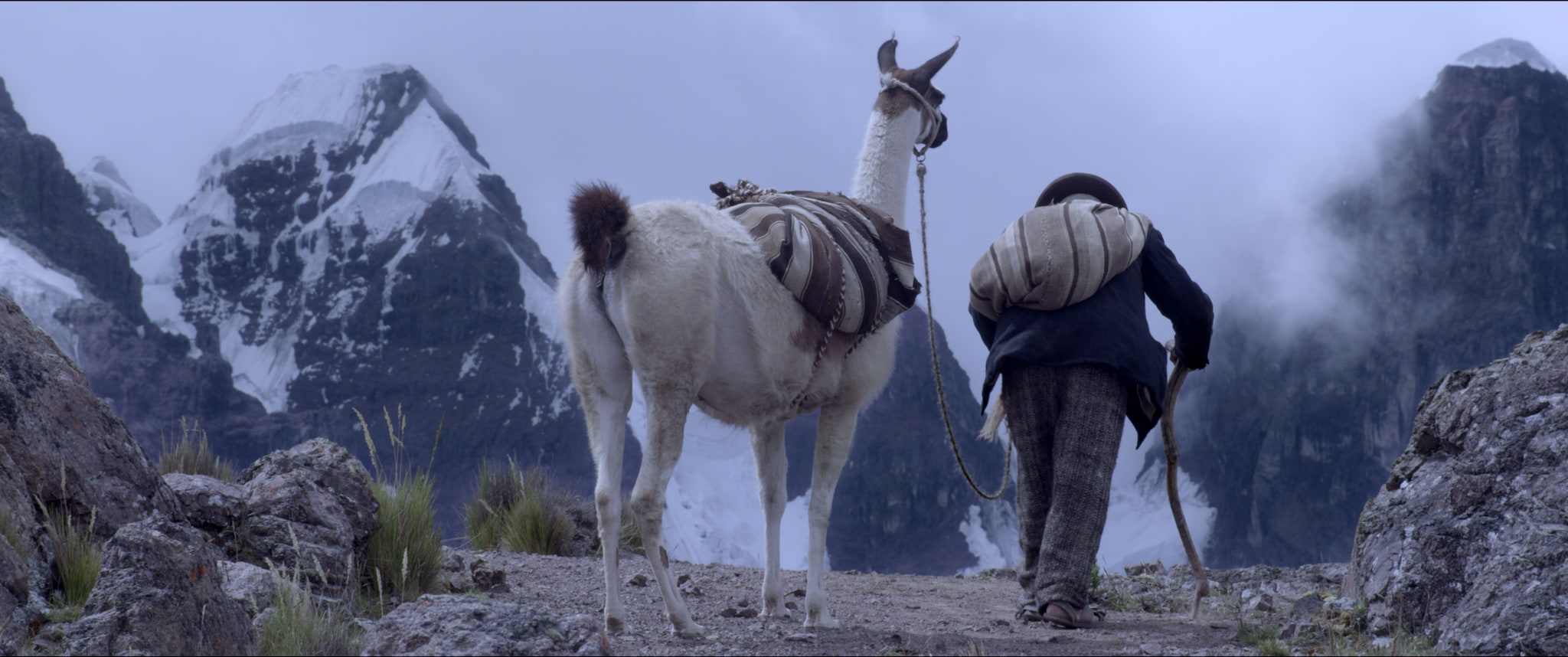
Wiñaypacha is not the first film shot in the indigenous language of Peru. However, do you consider that the use of Aymara marks a difference concerning previous experiences in Peruvian cinema?
There have been exciting uses of Quechua in national cinema, such as in Magallanes by Salvador del Solar. The scene in which the character played by Magaly Solier speaks Quechua without subtitles works because it allows a role reversal: it makes Lima viewers feel excluded from what is happening. What I find most questionable is what happens in a film like Samichay by Mauricio Franco Tosso, which is visually attractive but shot in Quechua without the director, producer, or screenwriter speaking that language. Only the protagonist, Amiel Cayo, speaks Quechua. And the worldview that Samichay offers is entirely Western. There I feel a kind of imposture, as also happens in Retablo by Álvaro Delgado-Aparicio. It is a bit harsh to say this, but there is not much coincidence between the language and the worldview presented in these films.
In the case of Kukuli, which was partially shot in Quechua, a Spanish text is also included by Sebastián Salazar Bondy. In some way, this Lima writer par excellence imposes itself over everything else. Something similar happens in an important film like Runan Caycu by Nora de Izcue, which begins with an impactful close-up of union leader Saturnino Huillca speaking in Quechua. However, in the following scenes, the voice of a narrator speaking in Spanish is imposed over Huillca’s voice. That is, Spanish is always in some way above. If it is not above, what is imposed is a worldview that does not correspond to the represented culture.
However, in Wiñaypacha, there is a clear correspondence between the worldview the images give us and the language used. And that seems like a milestone to me.


